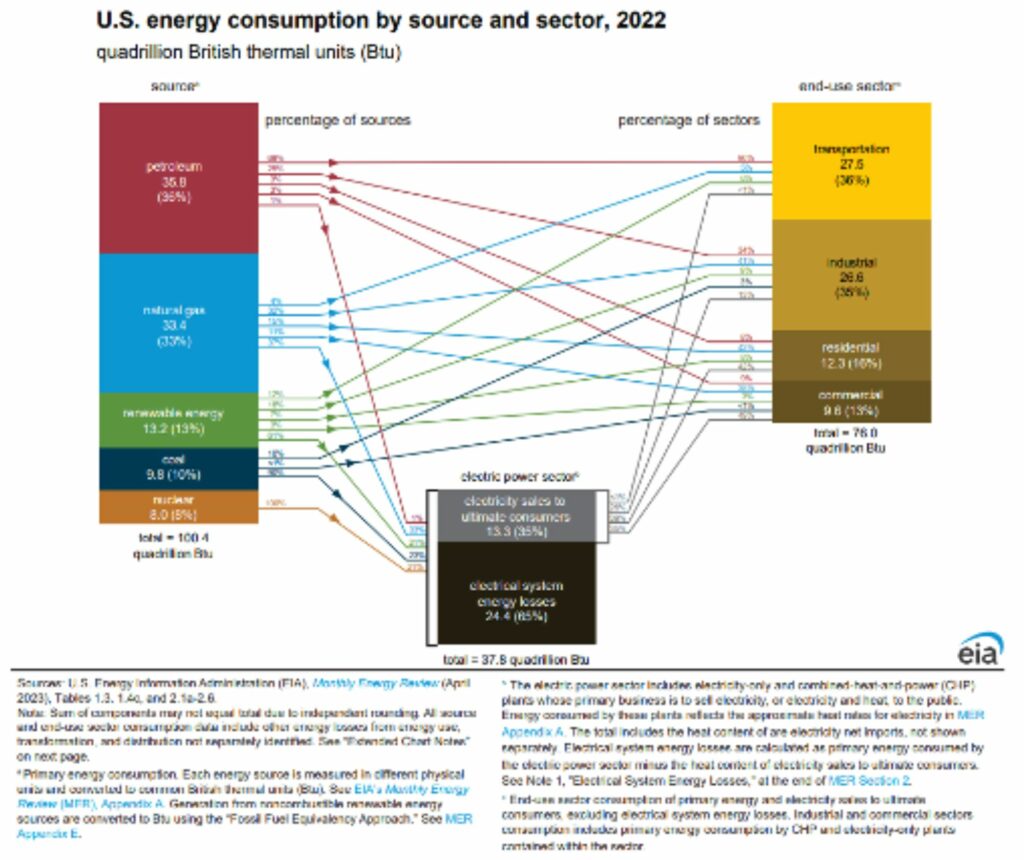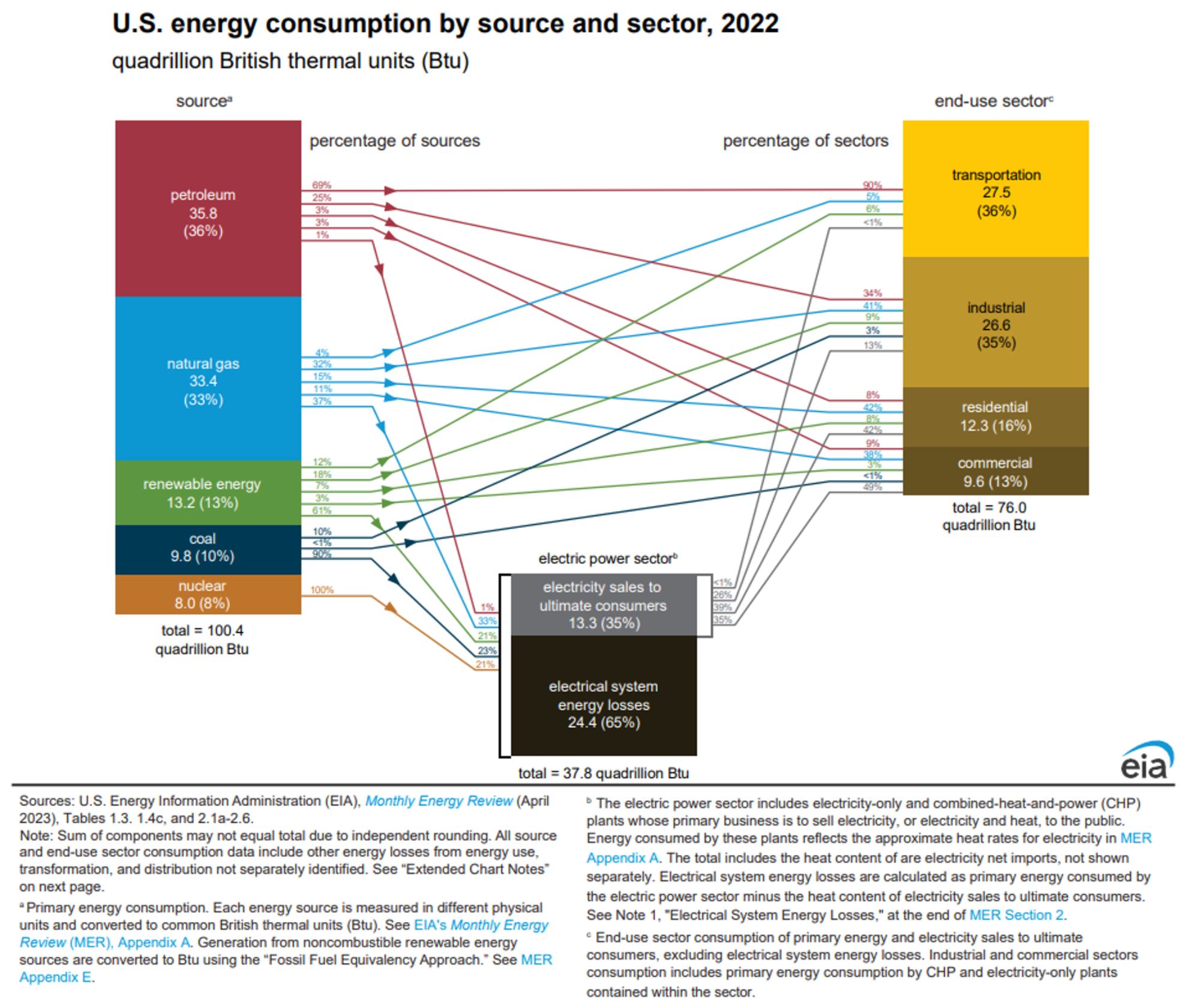Doubling America’s Electricity Production for Transportation Electrification
By Branko Terzic
The chart “US energy consumption by source and sector 2022” is produced annually by the Energy Information Administration and published in June based on previous year data. On the left the chart shows all sources of energy (in terms of Quadrillion British thermal units Btus) used in the US economy during the recorded year. On the right the chart shows where that energy is consumed by major sectors of the economy: commercial, residential, industrial and transportation. The box in the lower middle shows how much of the primary energy was converted to electricity for delivery to the sectors. It shows conversions “losses”.
Focusing on the energy converted to electricity, the EIA reports that 37.8 quadrillion Btu of primary energy was required to deliver 13.3 quads Btu to all sectors of the economy.
Looking at transportation it appears that 95% of transportation is based on fossil fuels (petroleum and natural) gas which means 26.1 quadrillion Btu.
What would it take to electrify transportation in the US?
The current electric grid delivers a little more than 13 quadrillion Btus annually to all sectors. The transportation sector requires about 26 quadrillion Btus annually of energy from fossil fuels. This is double what the electric grid delivered in 2022. On this basis the electric grid would need to triple in annual production.
However, electric motors make vehicles substantially more efficient than internal combustion engines (ICEs). Electric motors convert over 85 percent of electrical energy into mechanical energy, or motion, compared to less than 40 percent for a gas combustion engine. So if ICE engines are about half as efficient as electric motors that means the electric grid will only need to double annual energy production to enable electrification of transportation.
Electricity production almost doubled during the 40 year period 1970 to 2011 going from 20.3 to 39.2 trillion Btus. The drivers of growth in demand were increasing population, larger homes, new electricity devices ( the average home now has more than 26 different devices) and especially growth in number and size of air conditioning units. So, the electric grid could double energy production again during the next 40 years from 2023 to 2063.
At what pace and at what cost is the next question.
Keeping I mind also that to meet greenhouse gas emissions reduction targets the current grid ( 37.8 quads Btu) needs to be replaced with renewable and other non-carbon emitting productions sources (ok, I mean nuclear) in addition to the new “clean” energy production ( another 37.8 quad Btu) for the transportation fleet electrification. (These numbers are not adjusted for expected lower “losses” from renewables.) These are “big” numbers either way.
#BrankoTerzic #energy #regulations #experience #research #future #opportunity #strategy #management #people #electricity #power #utilities #renewables #RenewableEnergy #energysector #powergeneration #energyindustry #sustainability #public #utility #history #scientific #technology



Pingback:What could drive electric demand growth in the future? – Branko Terzic